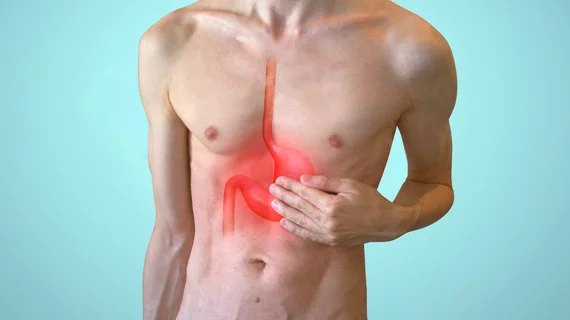Automated, EMR-based screening proves preventive as well as curative
After programming its EMR to automatically order ultrasound screenings for people at risk of abdominal aortic aneurysms (AAAs), a healthcare system saw a 540% spike in monthly screening exams for the condition over a six-year period.
And while the heavier screening schedule dropped the incidence rate per 1,000 patients, it also caught 250% more AAAs than the average during the pre-automation period (115 vs. 33).
What’s more, 11 automation-detected aneurysms were large and 10 required immediate surgery.
The latter finding shows the clinical utility of an automated, EMR-based ordering system for AAA screenings—and may justify consideration as a screening booster for other clinical indications, the researchers behind the work suggest.
The study was conducted at Kaiser Permanente Hawaii in Honolulu and published online Oct. 20 in JACR [1].
Interventional radiologist Hyo-Chun Yoon, MD, PhD, and colleagues built their system to accord with a recommendation from the United States Preventive Services Task Force. The USPSTF calls for a one-time ultrasound screening for AAAs in males aged 65 to 75 who have ever smoked.
The researchers knew such screenings to be underutilized at their integrated healthcare institution.
Lower Incidence but Potentially Higher Consequence
The study team started the automation project in 2019, rolling out EMR prompts that reminded primary care providers to order the ultrasounds for all eligible men.
The next year they converted to a fully automated system. This placed bulk orders for the exams based on patient age and risk factors. The system’s designers had the exams auto-ordered in weekly increments of 25—a measure to avoid overwhelming the radiology department with surges in abdominal ultrasounds to read.
To compare before-and-after order tallies and episode outcomes, the researchers conducted a retrospective chart review of patients who underwent ultrasound screening for AAA from January 2016 through December 2021.
Along with finding the 540% average increase in orders (from 16.3 per month to 105), the team found that 148 of 4,176 screened patients had AAAs.
AAA incidence was considerably lower in the automated ordering period vs. the pre-automation period—3.2% vs. 5.3%—but the authors state they “suspect that patients referred for screening via the automated program were likely closer to the true population prevalence of AAA.”
“Abdominal ultrasound screening for abdominal aortic aneurysm is an underutilized preventative healthcare measure in the United States,” Yoon and co-authors conclude. “An EMR-automated ordering program can significantly increase the number of abdominal ultrasounds performed for AAA screening. Although automated ordering decreases the incidence of detected aneurysms, the overall number of aneurysms identified via this method increases, some of which may require urgent repair.”
Study Exemplifies the Power of Proactive Radiology
In accompanying commentary, Kevin Oh, MD, and Patricia Balthazar, MD, both of Emory University, remark that radiology studies are “at risk of becoming a commodity” [2].
However, even from the isolation of a reading room, “radiologists can intervene with more active decision making, such as through the health IT tool introduced [in the present Kaiser Permanente Hawaii study], which allows greater adherence to screening exams. This can be adapted for other purposes, including adherence to imaging follow-up recommendations.”
More from Oh and Balthazar:
Making a larger impact on patient care does not always require direct face-to-face interaction, and exciting possibilities are opened through the effects radiologists can make on public health and clinical decision making enabled by technology.”

